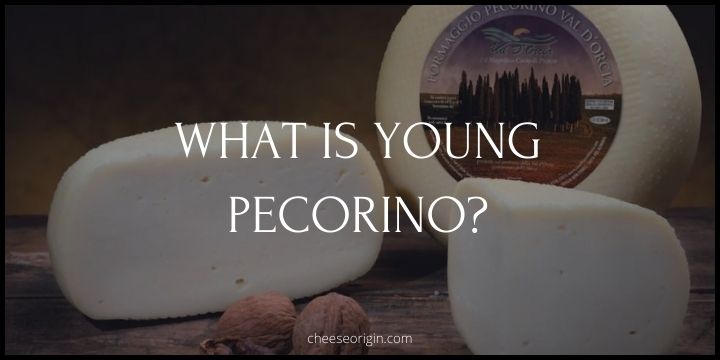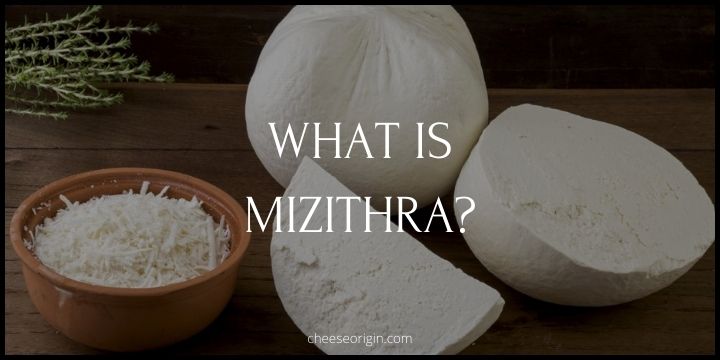What is Gorgonzola Dolce? Italy’s Creamy Blue Treasure

Unveil the gastronomic delight that is Gorgonzola Dolce, Italy’s creamy blue treasure. This cheese, with its rich history and unique flavor profile, is nothing short of a culinary gem. Born in the charming Italian town of Gorgonzola, this sweet variant of blue cheese has been tantalizing taste buds for centuries.
Beneath its ivory exterior lies a beautifully marbled interior, a testament to its fungal alchemy. Its delicate, creamy texture and subtly sweet flavor make it a standout in the world of cheeses. Indulge in the luxurious creaminess of Gorgonzola Dolce, a testament to Italy’s grand tradition of cheesemaking.
Quick Facts About Gorgonzola Dolce
| Fact | Detail |
|---|---|
| Origin | Italy |
| Region | Lombardy and Piedmont |
| Made from | Unskimmed cow’s milk |
| Texture | Creamy and soft |
| Rind | Natural, edible |
| Color | Pale yellow with blue-green veins |
| Taste | Mild, sweet, slightly tangy |
| Aging time | 2 to 3 months |
| Fat content | 25-35% |
| Shape | Large cylindrical wheels |
| Weight | 12 to 13 pounds |
| Pairings | Sweet wines, honey, pears |
| Certification | Protected Designation of Origin (PDO) since 1996 |
| Production | Year-round |
| Serving temperature | Room temperature |
| Storage | Refrigerated, wrapped in foil |
| Shelf life | 2-4 weeks after opening |
What is Gorgonzola Dolce?

Gorgonzola Dolce, often referred to as the ‘sweet’ version of Gorgonzola, is a true Italian masterpiece. Originating from the northern regions of Lombardy and Piedmont, this creamy delight is known for its unparalleled taste and texture. Unlike its sharper counterpart, Gorgonzola Piccante, Dolce offers a milder, sweeter flavor profile that makes it a favorite among both blue cheese novices and connoisseurs alike.
The magic of Gorgonzola Dolce lies in its production process. Made from unskimmed cow’s milk, it’s allowed to age for a shorter period – typically around 2 to 3 months. This results in a softer, creamier texture, and a delicate, almost buttery flavor. The cheese’s pale yellow interior, punctuated by characteristic blue-green veins, is encased in a natural, edible rind, adding to its rustic charm.
But it’s not just the taste that sets Gorgonzola Dolce apart. It’s the experience it brings to the table. Paired with sweet wines, drizzled with honey, or served alongside fresh pears, it transforms any meal into a gastronomic adventure. Whether spread on a slice of crusty bread or melted into a rich pasta sauce, Gorgonzola Dolce adds a touch of Italian luxury to every dish.
Gorgonzola Dolce is not just cheese – it’s a celebration of Italy’s culinary tradition. Every bite tells a story of craftsmanship, tradition, and a love for creating flavors that stand the test of time. Next time you find yourself in the cheese aisle, reach for Gorgonzola Dolce. It’s more than a cheese; it’s a journey through the soul of Italian gastronomy.
What Does Gorgonzola Dolce Taste Like?
Gorgonzola Dolce, often described as the milder sibling of Gorgonzola Piccante, offers a unique and inviting flavor profile. It’s characterized by a sweet, creamy, and slightly tangy taste that is less intense than most blue cheeses.
The sweetness comes from the high-fat content of the unskimmed cow’s milk from which it’s made. This gives it a buttery and almost dessert-like quality. The tanginess, on the other hand, is a subtle nod to its blue cheese family, providing a slight kick that balances the creaminess.
Despite the visible blue-green veins, indicative of mold cultures, the cheese doesn’t have the strong, pungent flavor often associated with blue cheeses. Instead, these veins contribute to an earthy undertone that adds depth to its overall flavor.
When consumed, Gorgonzola Dolce leaves a luscious mouthfeel due to its rich creaminess. It melts well on the tongue and has a long finish, allowing you to savor its complex yet harmonious flavors. Whether enjoyed on its own, paired with fruits, or used in cooking, Gorgonzola Dolce provides a delicately balanced and luxurious tasting experience.
Gorgonzola Dolce Tasting Notes
- Sweetness: Gorgonzola Dolce has a distinctive sweet profile due to the high-fat content in the unskimmed cow’s milk it’s made from.
- Creaminess: This cheese is renowned for its creamy, almost buttery texture that melts smoothly on the tongue.
- Mild Tanginess: Despite being a blue cheese, Gorgonzola Dolce is mild with a subtle tanginess that balances the overall sweetness.
- Earthy Undertones: The blue-green veins in the cheese contribute to an earthy undertone that adds depth to its flavor.
- Luscious Mouthfeel: Its rich creaminess gives Gorgonzola Dolce a luscious mouthfeel and a long finish, making it a delight to savor.
- Balanced Flavor: The harmonious blend of sweet, creamy, and slightly tangy notes makes Gorgonzola Dolce a well-balanced cheese that’s less intense than most blue cheeses.
- Versatility: Gorgonzola Dolce can be enjoyed on its own, paired with fruits or sweet wines, or used in cooking, thanks to its delicate yet complex flavor profile.
What is the Difference between Gorgonzola Dolce and Gorgonzola Piccante?
| Gorgonzola Dolce | Gorgonzola Piccante | |
|---|---|---|
| Aging Period | 2-3 months | Over 3 months |
| Texture | Soft, creamy | Firm, crumbly |
| Flavor Profile | Sweet, mild, slightly tangy | Sharp, strong, slightly spicy |
| Veining | Blue-green | More pronounced blue-green |
| Best Uses | Spread on crusty bread, paired with sweet wines, melted into pasta sauces | Crumbled over salads, melted into risotto, paired with robust red wines |
| Rind | Natural, thin, generally not eaten | Thicker, often removed before eating |
10 Best Gorgonzola Dolce Substitutes
| Substitute | Flavor Profile | Texture | Best Used In |
|---|---|---|---|
| Blue Cheese | Strong, tangy, and salty flavor | Crumbly to creamy, depending on the variety | Salad dressings, dips, or any dish that calls for a strong cheese flavor |
| Roquefort | Bold, tangy, and slightly sharp | Crumbly yet somewhat creamy | Ideal in salads or as a standalone cheese with wine |
| Cambozola | Mild, slightly sweet with a hint of blue cheese tang | Creamy, spreadable | Excellent in cheese platters, sandwiches, or melted in pasta dishes |
| Stilton | Rich, tangy, and slightly spicy | Crumbly, semi-soft | Ideal in salads, cheese platters, or as a topping for steaks |
| Mascarpone | Sweet, creamy with a slight tartness | Smooth, creamy | Ideal in desserts, sauces, or to balance out savory dishes |
| Boursin | Garlic and herb flavors, creamy | Soft, crumbly | Great in sandwiches, as a topping for vegetables, or in creamy pasta dishes |
| Feta | Tangy, salty, slightly tart | Crumbly, grainy | Perfect in salads, Mediterranean dishes, or crumbled over pizza |
| Taleggio | Mild, fruity, slightly tangy | Soft, sticky | Ideal in risottos, polenta, or on a cheese board |
| Ricotta Salata | Mild, slightly sweet | Firm, crumbly | Ideal in salads, pasta dishes, or grated over vegetables |
| Danish Blue | Strong, salty, sharp | Semi-soft, creamy | Perfect in salad dressings, cheese boards, or melted into sauces |
What Pairs Well With Gorgonzola Dolce?

Food that goes well with Gorgonzola Dolce:
| Category | Foods |
|---|---|
| Fruits | Pears, apples, figs, grapes, dates |
| Breads & Crackers | Sourdough bread, whole grain crackers, baguette, walnut bread |
| Meats | Prosciutto, salami, roast beef, grilled chicken |
| Vegetables | Arugula, spinach, roasted bell peppers, caramelized onions |
| Nuts & Seeds | Walnuts, pecans, almonds, sunflower seeds |
| Pasta & Grains | Fettuccine, risotto, gnocchi, polenta |
| Condiments & Spreads | Honey, fig jam, balsamic glaze, mustard |
| Desserts | Dark chocolate, cheesecake, fruit tarts, cannoli |
Also read: What Fruit Goes on a Charcuterie Board?
Beverage that goes well with Gorgonzola Dolce:
| Category | Beverages |
|---|---|
| Red Wines | Barolo, Cabernet Sauvignon, Zinfandel, Pinot Noir |
| White Wines | Chardonnay, Riesling, Sauvignon Blanc, Gewurztraminer |
| Dessert Wines | Port, Sauternes, Moscato d’Asti, Ice Wine |
| Beers | Belgian Ale, Stout, Porter, IPA |
| Non-Alcoholic | Sparkling water, Grape juice, Apple cider, Herbal tea |
Also read: Best Wine and Cheese Pairings: The Ultimate Guide
Frequently Asked Questions
1. Is Gorgonzola Dolce a healthy cheese?
Yes, Gorgonzola Dolce can be considered a healthy cheese when consumed in moderation. It has several potential health benefits. Studies suggest that Gorgonzola may help reduce cholesterol levels and prevent artery inflammation. It’s also high in nutrients like potassium and phosphorus. However, it’s also high in sodium, so individuals with kidney disease are advised to consult their doctor before consuming it.
Gorgonzola Dolce is also relatively easy to digest due to the presence of bacillus bacteria. Like other cheeses, it contains a fair amount of fat – a serving of 28g typically contains around 7-8g of fat and 5g of protein, with negligible carbohydrates. However, as with all foods, it’s best to consume Gorgonzola Dolce as part of a balanced diet.
2. Is Gorgonzola Dolce Sweet?
Yes, Gorgonzola Dolce is indeed considered a sweet cheese. The term “Dolce” translates to “sweet” in Italian. Gorgonzola Dolce is younger and creamier compared to other types of Gorgonzola and is known for its spreadable texture and mild, slightly sweet flavor. It’s less pungent and spicy than Gorgonzola Piccante, making it a favorite among those who prefer milder blue cheeses.
It’s worth noting that the sweetness of Gorgonzola Dolce isn’t akin to the sweetness found in sugary foods, but rather a subtle sweetness that complements its creamy, buttery characteristics.
Also read:
- What is Maytag Blue? America’s Signature Blue Cheese
- What is Cashel Blue? A Unique Taste of Irish Heritage
- What is Bresse Bleu? The Gentle Blue Cheese from France
- What is Kefir Cheese? A Tangy Twist in the Dairy World
- What is Explorateur Cheese? A French Triple Cream Cheese
- What is Esrom? Denmark’s Trappist-Style Cheese
- What is Saint Paulin? France’s Monastic Cheese





